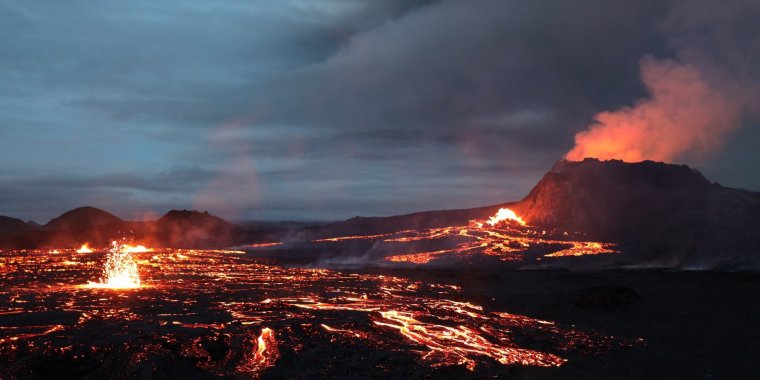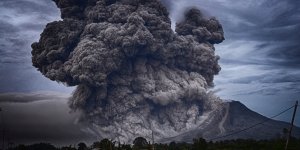| News / World News |
Lava from 2021 Icelandic eruption gives rare view of deep churnings beneath volcano
After centuries without volcanic activity, Iceland’s Reykjanes peninsula sprang to life in 2021 when lava erupted from the Fagradalsfjall volcano. New research involving the University of Cambridge helps us see what is going on deep beneath the volcano by reading the chemistry of lavas and volcanic gases almost as they were erupted.

Fagradalsfjall, Grindavíkurbær, Iceland. Photo: Toby Elliott/Unsplash
The study led by the University of Iceland, reports that the eruption was unusual because it was supplied by a particularly deep reservoir of magma originating around 15 kilometres beneath the surface, at the base of Earth’s crust.
Their results also show that volcanoes like this can be fed by complex plumbing systems, where different batches of magma can mix and travel to the surface in just a matter of days or weeks.
The researchers took measurements of lava and volcanic gases during the first 50 days of the eruption — giving them a near-real time report on the changing magma supply.
“I never expected to see the chemical composition of erupting lava change this quickly, showing us just how fast things can change in the depths beneath volcanoes,” said Simon Matthews from the University of Iceland.
The chemical fingerprint of lavas and the crystals inside them — together with the volcanic gases erupted — helped the researchers decode where the magma originated from and its journey to the surface. Until now, there has been a lack of information about the deepest parts of magmatic systems.
The results showed that, during the initial phases of the eruption, the lava was predominately coming from around the boundary between the crust and underlying mantle – the thick, rocky layer that makes up most of Earth’s interior. But over the following weeks, the composition of the lava changed, indicating the eruption was directly tapping magma from greater depths.
“Ever since Enlightenment thinkers started writing about volcanoes, scientists have drawn cross-sections to visualise how they might work below ground,” said co-author Professor Clive Oppenheimer from Cambridge’s Department of Geography.
“This study draws together different strands of information from monitoring the chemistry of lava and gas emissions to describe what is happening up to 20 kilometres down.”
They used indicators including the magnesium contents of the lava and carbon dioxide levels in the volcanic gases as barometers to gauge how hot and deep the magma feeding the eruption was.
They suggest that, for the magma to come from 15 kilometres below the surface, the eruption was fed by something like a high-speed train direct to the mantle.
“We’ve known for a while that magma coming from the mantle is variable,” said co-author Professor John Maclennan from Cambridge’s Department of Earth Sciences, “But we’ve had to work hard to find clues as to how this complex mixing happens.”
The authors point out that it has long been argued that different kinds of magma can mix deep in magmatic systems before an eruption. The new research shows that new magma can flow into a deep reservoir and mix with existing magma rapidly, in as little as 20 days.
Normally scientists use lavas erupted from old or extinct volcanoes to get a below ground view of volcanoes. But these samples are often too old to unravel processes happening over the course of a few days,
“I’ve looked at hundreds of samples from dead volcanoes, but never had the chance to observe such a spectacular example of magma mixing in real-time,” said Maclennan.
Magma mixing has been shown to be an important process in triggering volcanic eruptions, so the study findings could have implications for understanding what drove the eruption and for future monitoring of volcanic activity in Iceland and at similar volcanoes. (University of Cambridge)
YOU MAY ALSO LIKE





